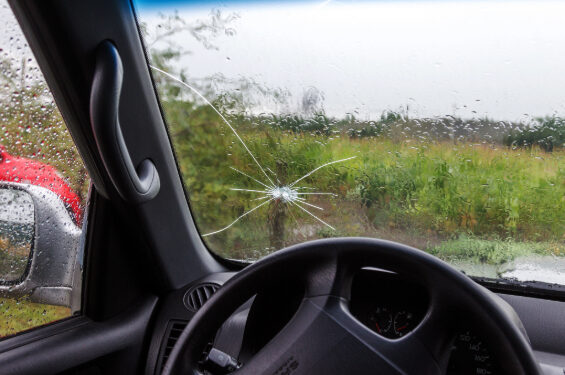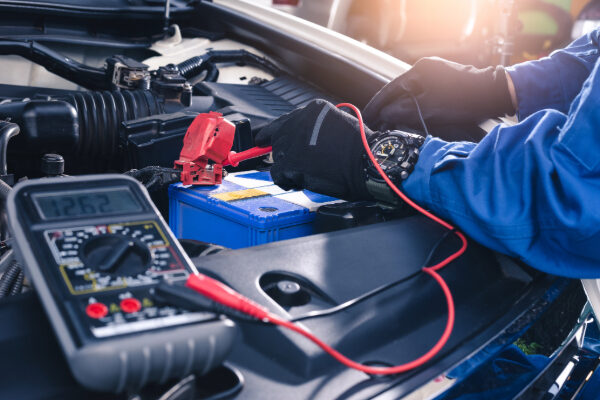
Vintage car maintenance differs from contemporary car maintenance in a couple of ways. First, a vintage car has different parts that can’t be hooked up to a computer for diagnostics. Second, you probably aren’t driving it every day, so some of the benchmarks typically used to calculate when maintenance is due may not apply while it’s in storage.
Follow these hot rod and muscle car maintenance tips to keep your vintage car in tip-top shape.
How often should you drive a hot rod?
Automotive experts often suggest you drive your hot rod at least once a month, if possible. That’ll make sure the battery has enough juice to fire up the engine, and it also gives the parts a chance to move around.
Even if you aren’t driving it regularly, your muscle car still requires regular maintenance. Here’s a closer look at the basics of hot rod maintenance to help protect and preserve your car.
Maintain brake fluids
Just like humans, cars require a lot of fluids to keep running properly. One of the biggest areas of concern for hot rods – particularly if they aren’t being driven regularly – is brake fluid. When your car sits for long periods of time, the brake fluid can attract moisture from the atmosphere, even if it’s in an enclosed storage space, and that compromises its effectiveness.
It’s important to note this same thing can happen to brake fluid that’s sitting in an opened bottle; if you break the seal on a bottle of brake fluid, make sure you use it within one year.
To avoid damage and wear to your hot rod, make sure you change the brake fluid each year, regardless of how often you drive it. Mechanics typically recommend avoiding silicone brake fluid in vintage cars because it’s not always compatible with older systems. While silicone brake fluid has a longer shelf life, it’s generally not worth the risk because it can lead to rust in your hot rod’s system.
Change muscle car oil every three months
Brakes aren’t the only area where fluids are crucial; oil needs to be changed several times a year. Stick to the type and weight of oil recommended by the car’s manufacturer or your mechanic, and aim to change the oil at least every three months. Otherwise, condensation can build up, and you risk getting rust inside the engine.
Finally, radiators need your attention because they can have serious problems when they aren’t used regularly. Running the engine a couple of times a month — even if you just let it idle in the driveway — will circulate fluids and help keep your radiator in better operating condition.
Tire maintenance for hot rods
Your hot rod’s beauty is more than skin deep, but you want to make sure you’re paying as much attention to its outer looks as what’s under the hood. To begin, look at your tires. Not only can a nice set of wheels make your car stand out on the road but they need to be well maintained to keep you rolling.
Check the tire pressure every month and use that time to do a visual inspection. Look for cracks and wear, and check the depth of the treads.
Even if your tires look great and don’t show signs of wear, if they’re more than six years old, you should invest in a new set. Rubber deteriorates over time, and even tires that don’t show wear or haven’t been driven should be tossed after six years.
Maintaining a hot rod’s exterior
A great paint job completes the look of your hot rod, but it takes extra care to keep it looking like new. Your car can attract dust while sitting in the garage, and every time you take it out on the road, you’re picking up damaging elements like exhaust from other cars, tar and grime from the road and, of course, bugs. All these are hard on the paint and can cause deterioration and scratches.
Keeping it clean not only makes your car look great, but it also protects and preserves the paint. Wash your car as part of your regular muscle car maintenance program, being careful to only wash it in the shade and dry it with a microfiber towel or chamois.
When your car is clean, finish it off with a good coat of carnauba-based wax, then polish any chrome or aluminum surfaces to make them gleam. Finally, recondition any rubber surfaces, including the tires. Your car won’t only look and perform better, but it’ll also stay protected for the next few months.
You don’t have to be an expert at car repair to learn how to maintain your vintage car. But knowing what your hot rod needs and how to provide the proper maintenance is key to its long life.
Caring for your prized hot rod also means ensuring you’re protected out on the road. Learn more about how hot rod insurance can keep you covered.



